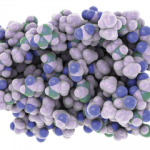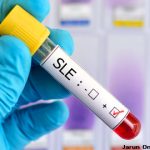Physicians following female patients meeting ACR classification criteria for SLE when they were age 35 years or younger and who have at least one sister or half-sister who is currently age 35 years or younger are invited to refer their SLE patient for this study. Nurse coordinators at the Feinstein Institute for Medical Research will handle all subsequent logistics, including obtaining informed consent of the patient with SLE and her sisters, conducting phone interviews, and arranging for blood collection and shipment back to the Feinstein Institute. This is an important study to which all rheumatologists may contribute. The results will increase our understanding of how lupus develops and will ultimately lead to the development of strategies for personalized prevention and therapy. For more information on the trial or on enrolling patients, visit www.SisSLE.org or call 1-877-698-9467.
Dr. Aranow is an associate investigator; Dr. Mackay is an assistant investigator; Dr. Gregersen is chief of the Center for Genomics and Human Genetics; and Dr. Diamond is chief of the Center for Autoimmune and Musculoskeletal Diseases. The authors all work at the Feinstein Institute for Medical Research.
References
- Michel M, Johanet C, Meyer O, et al. Familial lupus erythematosus. Clinical and immunologic features of 125 multiplex families. Medicine (Baltimore). 2001;80:153-158.
- Giles I, Isenberg D. Lupus in the family—analysis of a cohort followed from 1978 to 1999. Lupus. 2001;10:38-44.
- Priori R, Medda E, Conti F, et al. Familial autoimmunity as a risk factor for systemic lupus erythematosus and vice versa: A case-control study. Lupus. 2003;12:735-740.
- Estes D, Christian CL. The natural history of systemic lupus erythematosus by prospective analysis. Medicine (Baltimore). 1971;50:85-95.
- Arbuckle MR, McClain MT, Rubertone MV, et al. Development of autoantibodies before the clinical onset of systemic lupus erythematosus. N Engl J Med. 2003; 349:1526-1533.
- Baechler EC, Gregersen PK, Behrens TW. The emerging role of interferon in human systemic lupus erythematosus. Curr Opin Immunol. 2004;16:801-807.
- Graham RR, Kyogoku C, Sigurdsson S, et al. Three functional variants of IFN regulatory factor 5 (IRF5) define risk and protective haplotypes for human lupus. Proc Natl Acad Sci U S A. 2007;104:6758-6763.
- Niewold TB, Hua J, Lehman TJ, Harley JB, Crow MK. High serum IFN-alpha activity is a heritable risk factor for systemic lupus erythematosus. Genes Immun. 2007;8:492-502.


